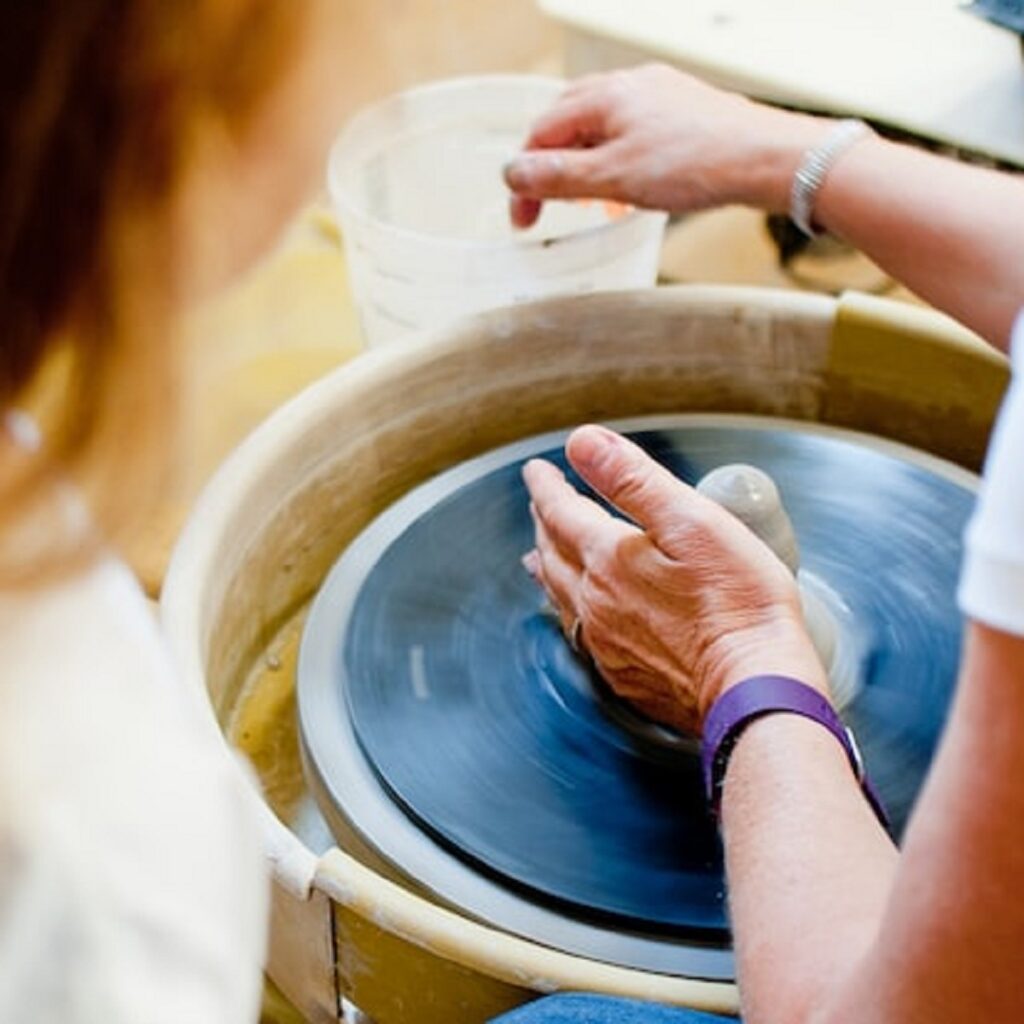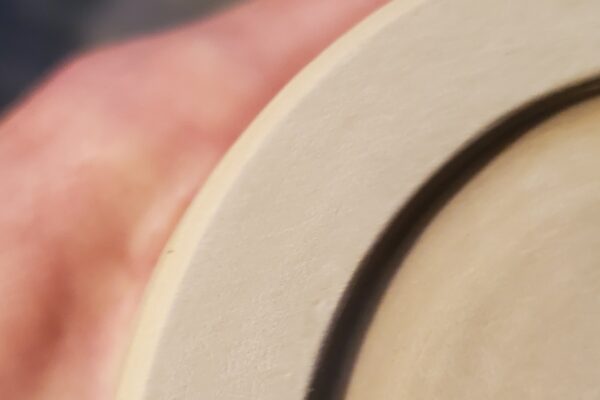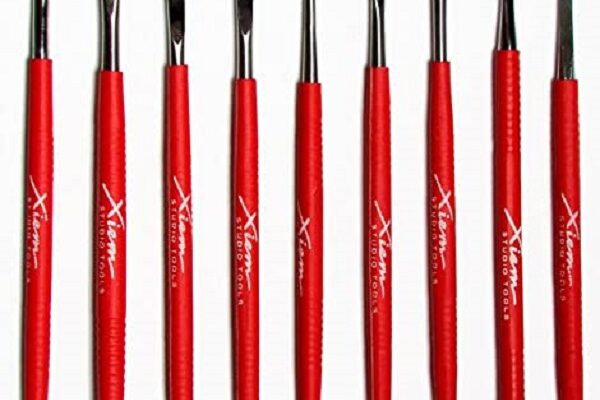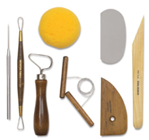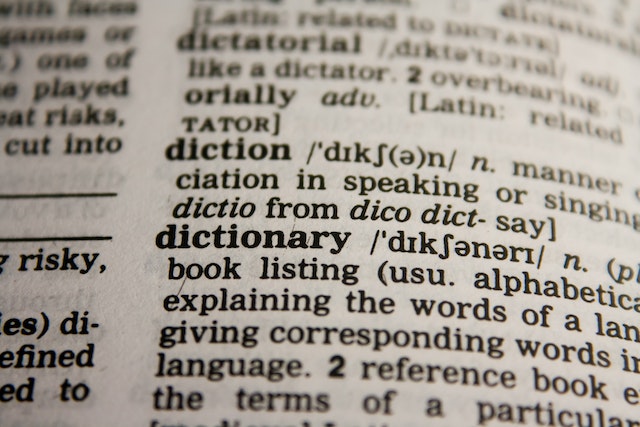
When you start out as a beginner in the big wide world of Ceramic Pottery, it won’t take long before you come across some Potter’s jargon or Ceramics terms that are unfamiliar. There’s a lot to know, and clays and glazes are more complex than meets the eye… enter pottery jargon.
We have defined the basic Ceramics Terms that you are likely to hear in the studio (but might not be familiar with).
The Pottery Network’s Glossary Of Ceramics Terms You Might Not Know
Bat:
what is a bat in ceramics?
(tool): a bat is a round disc, usually made of wood or plastic, that fits on bat pins on the head of a potter’s wheel, to allow a thrown piece to be removed from the wheel to dry without being touched.
Bisque or Bisqueware:
what is bisqueware?
(a stage of clay): the term bisqueware refers to clay which has been formed and fired once, but is not yet glazed.
Calipers:
what are calipers?
(tool): a tool for measuring the specific width of a piece of pottery in a particular place that is otherwise difficult to measure; for example, a potter may use calipers to exact the diameter of the rim on a casserole dish, to create a lid that will fit it.
Cone:
what is cone in ceramics?
(general term): short for ‘pyrometric cone’, which is a tiny pyramid-shaped clay structure that is used in kilns as a measure of temperature. The number assigned to a cone represents the temperature at which the pyrometric cone will melt or bend. Want to learn more about cone temperatures for various clay types? Check out this article.
Earthenware:
what is earthenware?
(type of clay): Earthenware clay is on the softer and more porous end of clay body types. Earthenware fires at a low temperature, and is categoriezed as a low fire clay. Want to learn more about specific clay types? We have some great details in this article about clay types.
Earthenware:
what is earthenware?
(type of clay): Earthenware clay is on the softer and more porous end of clay body types. Earthenware fires at a low temperature, and is categoriezed as a low fire clay. Want to learn more about specific clay types? We have some great details in this article about clay types.
Fire:
what does it mean to fire something in ceramics?
(method): a process of baking a clay form (or a glazed piece of bisqueware) in a kiln by heating it up to a specific temperature. Forms are typically fired once to harden (also called a bisque fire), and a then fired a second time once glazed (also called a glaze firing).
Foot:
what is a foot in ceramics?
(general term): a base on a finished piece (usually perfected and trimmed on the potter’s wheel using special tools). Typically found on the bottom of wheel thrown bowls.
Greenware:
what is greenware?
(stage of clay): a fully dried piece of pottery, which has not yet been through a first fire in a kiln. Clay remains very brittle and fragile in this stage.
Grog:
what is grog?
(additive to clay): grog is finely ground fired (unglazed) clay, which is ground to differing levels of coarseness. Grog is then added to clay in order to strengthen it. Grog also adds texture to clay, and can range from fine to more coarse.
High-Fire Clay:
what is high fire clay?
(category of clay): clays that can be fired at cone 10 or higher. High fire clay is generally fired to between roughly 2012 and 2336 degrees F. At this temperature, high fire clays (like stoneware and porcelains) become very hard and durable.
Kiln:
what is a kiln?
(equipment): a machine that Potters use to heat up (fire) clay. Kilns are generally either fire, gas or electric powered. Want to learn everything you need to know about kilns? Visit our Kiln Page for more info!
Leather hard:
what is leather hard clay?
(a stage of clay): partially dried clay. Clay at the leather hard stage can be handled carefully, but is still soft enough to attach handles, join it to other pieces, etc. In the leather hard stage, the clay has lost around 80-90% of it’s water content.
Pug Mill:
what is a pug mill?
(equipment): a machine that Potters use to process clay waste back into useable clay. A mixture of dried clay, broken (unfired) pottery and water is added and processed through the pug mill many times until it reaches a homogeneous consistency.
Slip:
what is slip?
(a stage of clay): as the name suggests, slip is a slippery mixture of clay and water that is typically about 50/50 in ratio. Slip is used in the process of attaching clay components to other (leather hard) pieces. It is also used in the casting process.
Stoneware:
what is stoneware?
(type of clay): Stoneware is a clay body that can be further divided into mid-fire and high-fire stoneware types. This type of clay, once fired, is very hard and can be vitrified. High fire stoneware can hold water once fired, without being glazed. Want to learn more about specific clay types? We have some great details in this article about clay types.
Wedging:
what is wedging?
(method): a process of repeatedly cutting and kneading clay against a hard surface to eliminate air pockets and achieve a homogeneous consistency, to optimize the clay for working.
You Might Also Like:
Signed Up For Your First Pottery Class?
